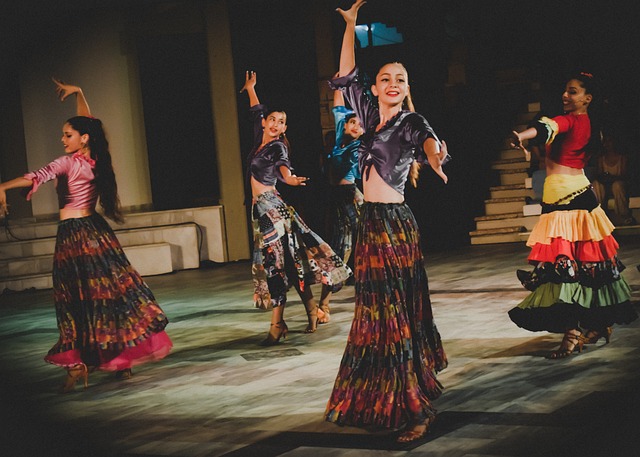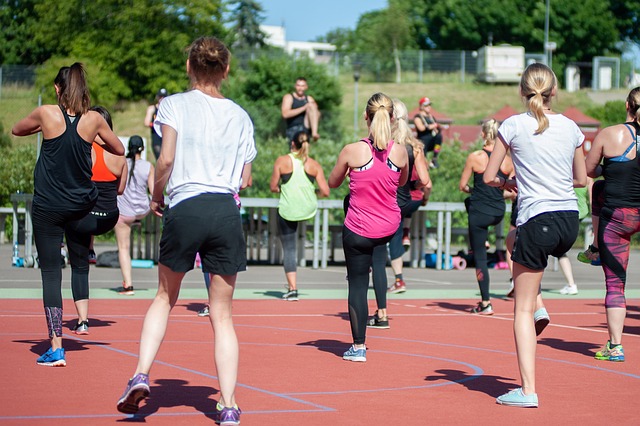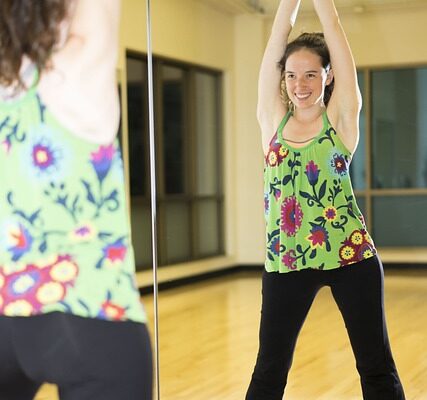Zumba is one of the world’s most well-known fitness organizations, with over 200,000 class locations in 180 countries.
While the organization is most known for its iconic “Zumba” Latin dance fitness class, it also provides a variety of other workout formats, including strength training, kid’s fitness programs, and even water aerobics sessions.
Each class consists of carefully coordinated moves set to upbeat salsa and foreign music. Zumba is essentially a fun, high-energy workout experience that keeps you motivated to exercise and come back for more.
What exactly is Zumba?
This dancing class incorporates high- and low-intensity intervals to increase cardiovascular fitness while also improving coordination, agiliity, balance and, to a lesser extent, strength through the use of beginner-friendly choreography.
Classes often feature Latin-inspired music, beginning with a gentler warm-up song, increasing in intensity throughout the workout, and concluding with a cool-down song. Even if you’re not a skilled dancer, the choreography is repetitious and built upon, so most individuals will pick up on the routines as they go.
The Origins of Zumba
Alberto “Beto” Perez, a Colombian dancer who launched the exercise class in his own country in the 1990s, officially founded Zumba in the United States in 2001. Perez’s “rags to riches” narrative has a happy ending—he was instructing an aerobics class at his local gym when he discovered he’d forgotten his regular music.

Perez chose to begin his fitness program in the United States in 2000. In 2001, he collaborated with two investors to launch a series of three Zumba DVDs via infomercial.
The concept of dancing fitness wasn’t novel when Zumba grew to prominence, but the high-energy pleasure of its courses was.
Furthermore, the timing of Zumba was great. In the early 2000s, huge fitness facilities such as 24-Hour Fitness and Lifetime Fitness were springing up all over the place, with membership often incorporating group fitness courses.
These gyms were searching for one-of-a-kind classes to boost the appeal of their facilities, and Zumba suited the bill.
Class Varieties
Zumba attracts a largely female crowd, although everyone is welcome. People of all ages and dance skills have flocked to the sessions, particularly at its peak popularity between 2005 and 2015.
As a response, the company launched a slew of new initiatives to make the class and choreography more accessible to people of all ages, genders, and fitness levels.
Let’s check out what types of classes we have.
- Aqua Zumba: Taking the Latin dance craze to the pool, Aqua Zumba is ideal for anyone with lower-extremity problems or who requires low-impact fitness.
- Zumba Gold: This modified version of the conventional Zumba class is intended for an older audience looking for the same lively music and flare as a traditional class but at a lower intensity.
- Zumba Kids: Designed for children aged 7 to 11, Zumba Kids alters and breaks down traditional Zumba moves before including games and activities to keep children involved and interested while working up a sweat.
- Zumba Kids Jr.: This is geared toward children aged 4 to 6 and is marketed as a “dancing party” to keep this age group engaged.
- Zumba Step: Very similar to Latin-inspired dance choreography, but adding some aerobic steps to raise the intensity and add more leg-strengthening routines due to stepping on and off the elevated surface regularly.
- Zumbini: This once-week, 45-minute session is created for the youngest Zumba fans aged 0 to 3 years old; the children and their parents or babysitters to bond over music and engage in age-appropriate active play; think less “exercise” and more “learning experience.”
As the popularity of strength training courses grew over the last decade, drawing people into CrossFit gyms and choreographed strength sessions, the Zumba brand moved to add more strength alternatives to its repertoire.
Here are are some Zumba classes with added intensity.
- Strong by Zumba: This is a high-intensity bodyweight training workout with moves choreographed to the beat of the music; this program includes pushups, squats, burpees, and lunges.
- Gold Toning with Zumba: Similar to Zumba Toning, but with a lower intensity level aimed for a slightly older clientele.
- Zumba on the Move: A circuit designed to promote cardiovascular fitness and muscular strength by alternating between dancing motions and strength training exercises.
- Zumba Sentao: A chair is used to focus on core strength without the use of weights.
- Zumba Toning: Involves the use of small weights to add a strength training component to familiar Zumba dancing moves.

How Does It Work?
Almost all Zumba brand sessions are 45- to 60-minute group fitness programs led by a Zumba-certified instructor.
These are normally available at gyms and fitness centers, although Zumba instructors are free to promote courses on their own, hosting workouts at parks, schools, and other locations.
Between songs, you can grab some water and take a breather before the next music begins.
Zumba class schedules are usually determined by the gym or fitness center where the courses are held. It’s best to stick to a regular schedule and attend at least two to three weekly cardio-based fitness sessions, such as Zumba.
People enjoy Zumba becaue it feels like a dance party disguised as a workou. Most people who desire to improve their cardiovascular fitness through dance will find Zumba to be a safe, pleasant, and effective workout.
There are only a few downsides to the regimen, which are basic considerations you should take when beginning any new training plan.
BENEFITS
From physical to practical factors, the advantages of Zumba classes are listed below.
Accessibility
Zumba as a brand is highly versatile and suited to practically all fitness levels and interests.
Even if your local gym does not offer Zumba lessons, you may find that a neighboring swimming pool offers Aqua Zumba or that an independent instructor offers courses at a nearby park on a pay-per-class basis.
Fitness in general
Given Zumba’s enduring popularity, numerous research on the workout’s effectiveness has been conducted.
According to a 2016 assessment of the literature, it was beneficial in improving aerobic capacity (cardiovascular fitness), while limited further evidence suggested that it could improve muscular fitness and flexibility.
Sustainability
Adherence—continuing the exercise regimen after you start—is one of the most important variables in exercising. In general, the more pleasant a program is, the more likely you are to stick with it. And the more you stick to a program, the more likely you are to see great outcomes.
According to some experts, a Zumba intervention in sedentary people with metabolic syndrome “showed good feasibility and adherence,” indicating the program’s overall sustainability.
General Health and Energy
While practically any consistent workout program can assist in improving mood, self-esteem, and energy, Zumba has a few peer-reviewed research testifying to the program’s psychological advantages.
According to some studies, healthy women who participated in an 8-week Zumba program reported favorable changes in their views of physical strength, autonomy, and life purpose, boosting their overall sentiments of health and well-being.
The Price
The price varies based on where you take the class. If you pay for each lesson, you’ll probably spend between $5 – $25 per class, depending on the location and the instructor. If you belong to a gym that offers Zumba classes, the class may be included as part of your membership.

You can also obtain a DVD to work out at home for as little as $10. The price flexibility, depending on region and needs, makes the program financially accessible to the majority of individuals.
DISADVANTAGES
Zumba has many advantages, but there are also drawbacks to consider.
It does not make exaggerated claims about calorie burn, weight loss, or strength development. Instead, their marketing emphasizes boosting fitness in a joyful way that helps improve how you feel every day—and they succeed on both counts.
Lacks Components of Strengthening and Flexibility
The research shows that Zumba can improve cardiovascular health, but the jury is still out on whether exercise can improve flexibility and strength. You shouldn’t think of Zumba as a well-rounded general fitness class unless you’re taking courses like Strong by Zumba that explicitly feature strength-training techniques as a main component of the workout.
In addition to 2 – 3 classes each week, you may wish to include some strength training and flexibility activities in your routine.
Considerations for Safety
All workout programs, regardless of type, are dangerous. You could strain a muscle, twist an ankle, or trip and fall. Excessive discomfort or overtraining symptoms might occur if you perform too much too quickly.
However, the Zumba brand has gone out of its way to create programs for all audiences and age groups, with varied levels of intensity and challenge to decrease the chance of damage.
Although this is a typically safe fitness exercise, because any physical activity involves inherent risk, you should assess your physical health before beginning a program.
If you have a history of ankle or knee difficulties or a known lower-extremity injury, consult a healthcare physician before beginning Zumba, or begin with a lower-impact version of the program.
And, if you’re new to dance choreography, don’t overdo it and overwork yourself. Allow yourself plenty of time to master the motions at your own speed. Moving rapidly or without coordination can put you in danger of harm.

How Zumba Measures Up
It is a fun and effective dancing workout that is ideal for anyone who appreciates lively music and an energetic group training atmosphere. Here’s how it compares to other classes of its kind.
Jazzercise
Jazzercise is the original dance-fitness class that swept the globe in the 1980s and 1990s. While it enjoyed a brief rebirth in the 2010s, Jazzercise has struggled to regain its former prominence.
It delivers coordinated dance moves to lively music in a fun, group setting. If you prefer the atmosphere of Zumba but aren’t sure about the booty-shaking intensity of dance choreography, Jazzercise may be a better fit.
BUTI Yoga:
BUTI Yoga is a high-intensity workout that incorporates African dance-inspired choreography and yoga movements. BUTI is unique in that it develops strength, flexibility, and aerobic endurance while also developing strength and flexibility.
The curriculum is also available online and through independent instructors at gyms and fitness centers, allowing you to attend lessons almost anywhere.
Classes in Barre
Barre fitness courses are popular programs that are frequently offered in boutique fitness facilities. These routines are more concerned with flexibility, muscular endurance, and core strength than with cardiovascular fitness. The movements are slower and more regulated, and you’re not attempting to keep up with a sequence of fast-paced steps.
Barre workouts, which emphasize strength and flexibility, maybe a perfect complement to Zumba. They are also regarded as a low-impact workout, making them an excellent choice for beginners or those with known lower-extremity ailments. However, Barre classes are frequently more expensive, ranging from $15 – $35 for every class.
To Conclude
Zumba classes are widely available. To find these classes near you, look online or call your local gym facility. It’s a really popular lesson that has spread to many other areas.
This type of class offers a pleasant and enjoyable workout experience for people of all ages and abilities. There are a lot of independent studies to back up the program’s efficacy, and there isn’t much to counteract its potential benefits.
If you dislike dancing, fast-paced choreography, or Latin-inspired music, this might not be for you. However, if you want to attempt an addictively exciting, high-energy group dancing workout paired with cheerful music, this dance exercise is a terrific option.
